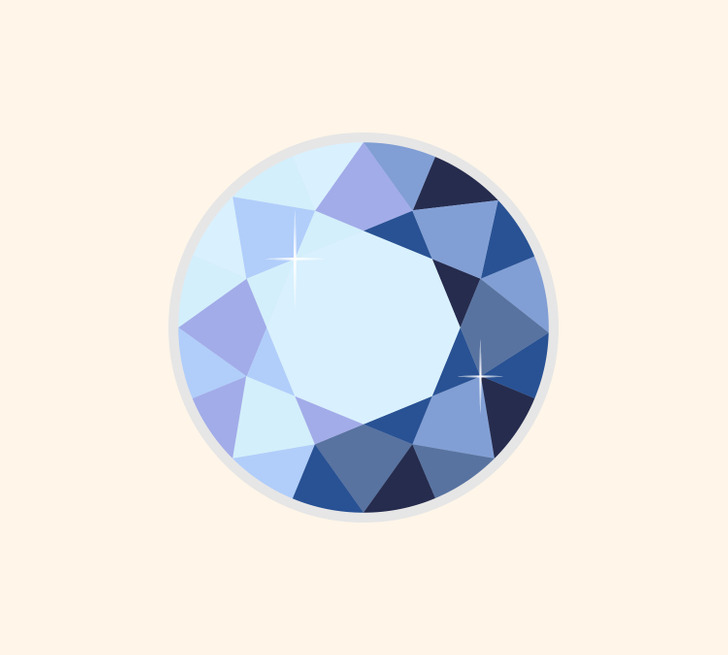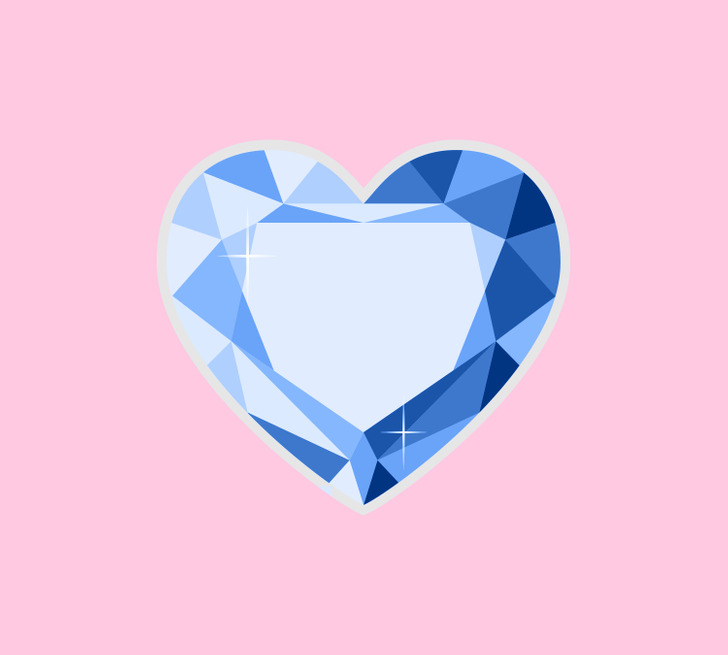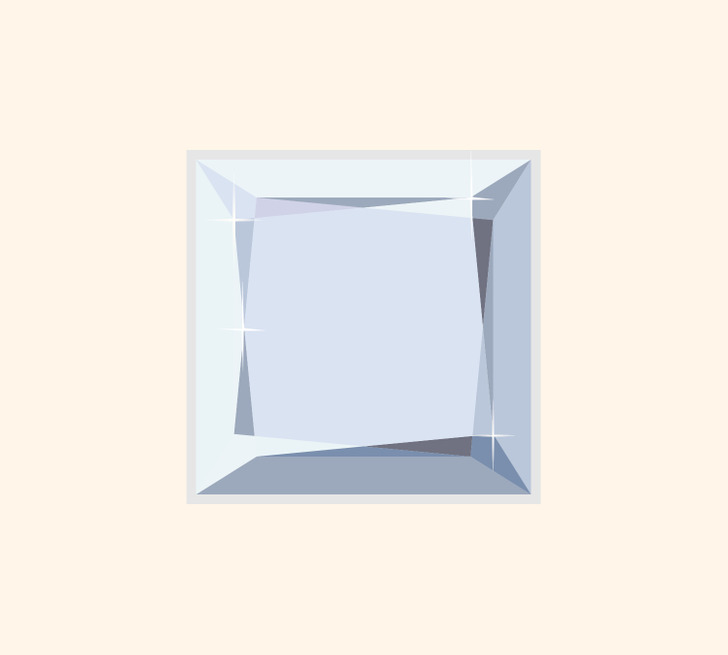A Guide to Gemstone Cuts

5-Minute Crafts is going to tell you about 12 different types of cuts of gemstones.
1. Round
A round cut is a shape that most people think about when they imagine a diamond. In its classic look, it has 57 facets to disperse the light evenly and maximize the shine. Besides, the lower part is a cone shape. It gives a big return of light from the top of the gemstone and gives it additional shine.
The universal shape of a round-cut gemstone combines well with all metals and styles of jewelry. This is one of the reasons why round gemstones are some of the most popular choices for wedding rings. At the same time, a round cut is one of the most complex ones to produce, and it’s one of the most expensive.
2. Oval
The oval cut has an elongated, elliptical shape. It has 69 facets that give the same shine as the round cut. But the oval cut has an additional advantage: the elongated shape makes the gem look bigger, and the finger, thinner and longer.
Kate Middleton got her famous 12-carat oval-cut ring from Prince William. Before it was given to her, it belonged to his mother, Princess Diana. Katie Holmes also got an oval-cut, 5-carat ring when she married Tom Cruise.
3. Asscher
This square type of cut was developed by the Asscher brothers in 1902 in Holland. It remained popular in the 1920s, but in 2001, it changed a little, resulting in the Modern Asscher or Royal Asscher cut. The new versions have an increased number of facets (from 58 to 74) and the corners became wider.
The Asscher cut is also called the square emerald cut because it’s a mix of the princess and emerald cuts, which you’ll learn about later. Instead of creating a pattern from facets to highlight the brightness and the color of the gemstone, this method creates stepped facets to maximize its transparency and clarity.
You can see an Asscher engagement ring in the third season of Sex and the City. It was given to Carrie Bradshaw by Aidan.
4. Pear
Pear-cut gemstones have 71 facets and look like a sparkling teardrop. Such a number of facets allows it to reflect light efficiently and make the gemstone even brighter.
For the pear cut, symmetry is crucial — the point should align with the peak of the rounded end. Additionally, pear-shaped gems require a 6-thong prong to support the fragile point.
5. Emerald
The emerald cut is a rectangle with trimmed corners. Such a gem has around 50 facets, which is less than round or square cuts have. The thing is, it’s not about the shine, but more about the clarity and color of the gemstone. The step-cuts allow light to bounce brightly between them.
Of course, this cut was originally used for emeralds. And since emeralds occur in nature with numerous inclusions, the cutting process is quite complicated because emeralds are easy to break. This cut solves all the problems: it takes less effort and it protects the gem from breaking. Later, this cut was used for other gemstones. Such a cut looks stunning on anyone’s fingers.
6. Baguette
The baguette cut looks like the emerald, but the gem has a more elongated shape. According to one of the versions, its name originated from the Italian “bacchetta,” which means stick, and the other version says it’s from the French “baguette” (which is a type of bread).
The baguette cut was created in the 1920s and 1930s during the Art Deco and Art Nouveau movements. Thanks to the clear lines and modern geometric look, it became very popular, fast. It’s made in a step fashion and has 14 facets that look like a pyramid without a top. Even though the color and brightness are not as clear as they are in a round cut, the baguette cut highlights the purity of the gemstone.
7. Marquise
The marquise cut has 57 facets that allow it to reflect most of the light, create maximum shine, and show off the deep color of the gem. Just like the pear cut, it’s important to create perfect symmetry for 2 reasons. It minimizes the risk of breaking the gem and places it well in the frame.
The marquise cut has the biggest surface area, which creates an illusion of a bigger gem. Plus, its elongated shape makes the finger look longer and thinner.
The marquise cut has a history. Such a gem was commissioned by King Louis XIV of France to present to his love, Marquise de Pompadour. With its long lines and elongated shape, it was supposed to resemble her perfect smile.
8. Antique
The antique cut is often called the cushion cut. Such a gem has around 64 facets and a soft square or rectangle shape that looks like a cushion. This cut is great for highlighting the shine and sparkle of the gem.
The cushion cut is a classic, which is great for vintage-style jewelry. This is probably why it has a second name — antique.
9. Trilliant
Trilliant-cut gemstones are triangular in shape. The edges might be a bit rounded or sharp on each of the 3 sides. The rounded ones are used for single gems, and the sharp ones are for side stones. Because it’s not a deep cut, it creates an illusion of a bigger gem.
For this cut, it’s important to keep the proportions and the symmetry, and it also works well with the corners. It allows the gemstones to scatter light to highlight their deep color and sparkle.
10. Heart
The heart-shaped cut is basically a pear-shaped cut with a deepening on the top. The cut has 59 facets and a clear symmetry to create 2 even and lightly rounded halves of the gem.
The heart cut is rarely used for engagement rings but it’s still a popular choice for earrings and pendants. The most famous example is Rose’s necklace from Titanic.
11. Princess
Princess is the second most popular cut after round. The gemstone is square and has anywhere from 58 to 76 facets that reflect the light beautifully. It makes the princess a perfect choice for light transparent gemstones.
Such a gemstone is a great choice for both buyers and manufacturers. During the cut, up to 80% of the raw material is preserved while the number is only 50% in the round cut.
12. Radiant
This square cut is a combination of princess and antique. The corners are cut on a direct line instead of being rounded as they are in antique. As a result, you get a more modern square shape that shows off the shine and the color of the gemstone. The latter works well with the step facets, so this cut is great for jewelry with colorful gemstones.











